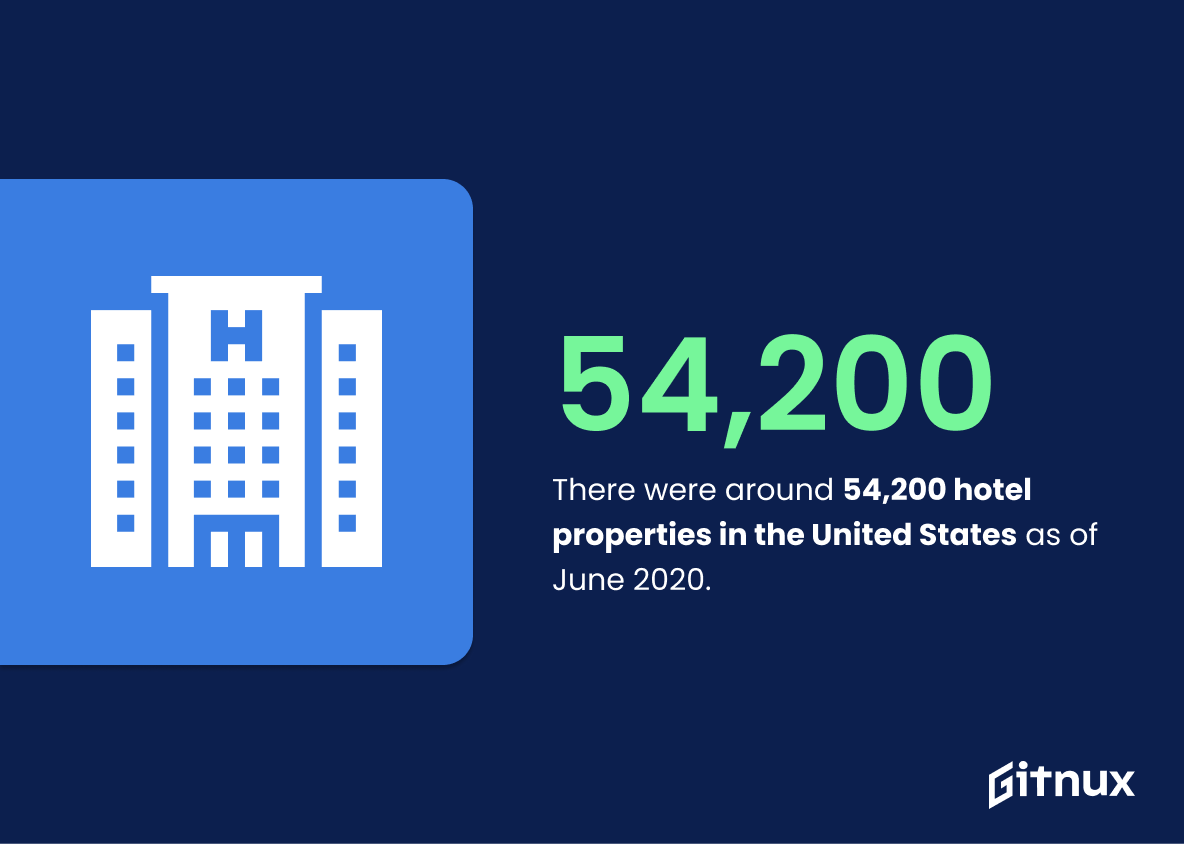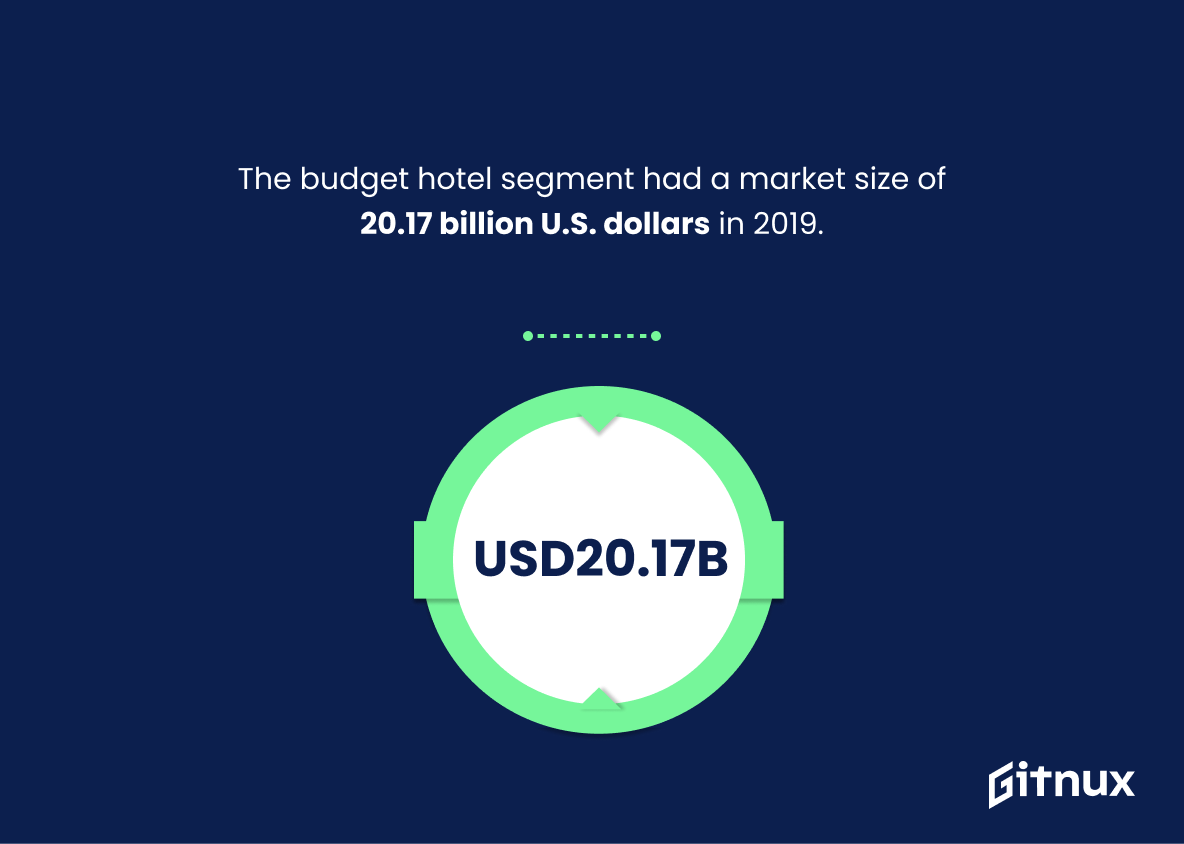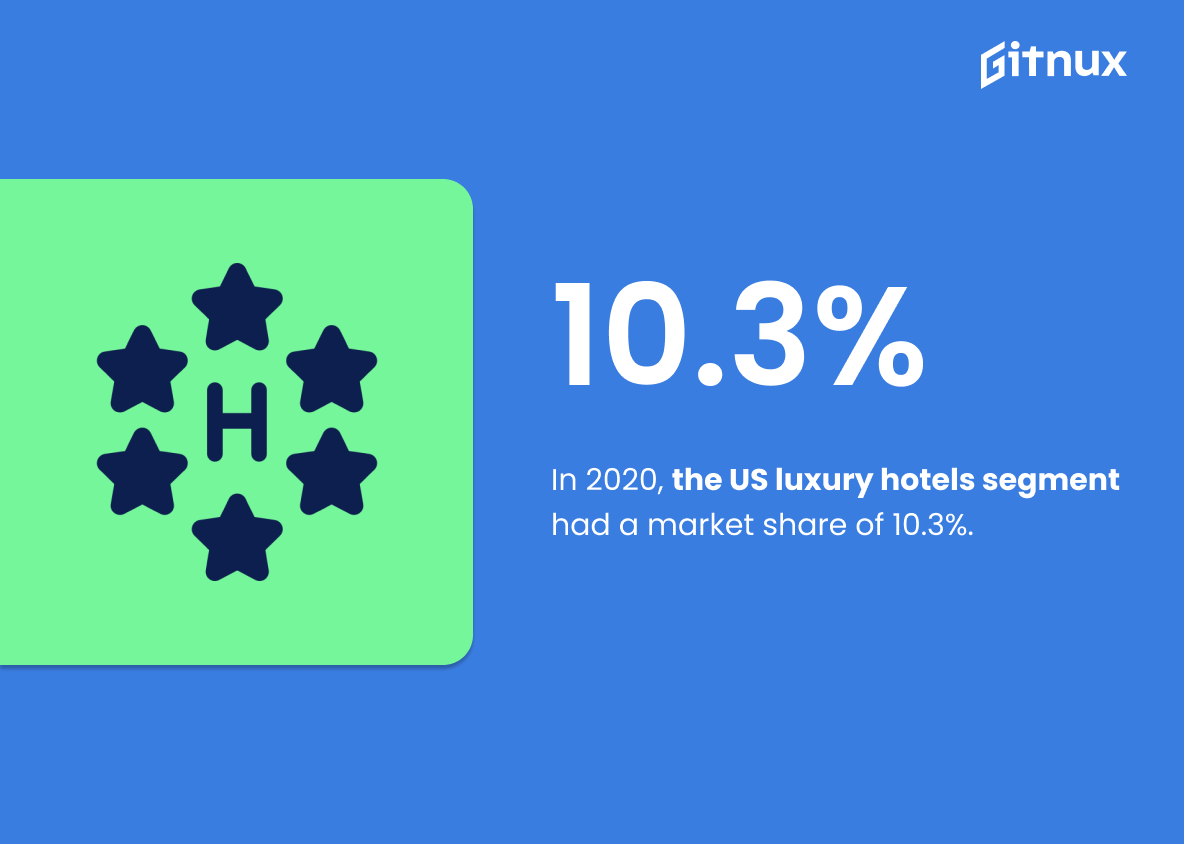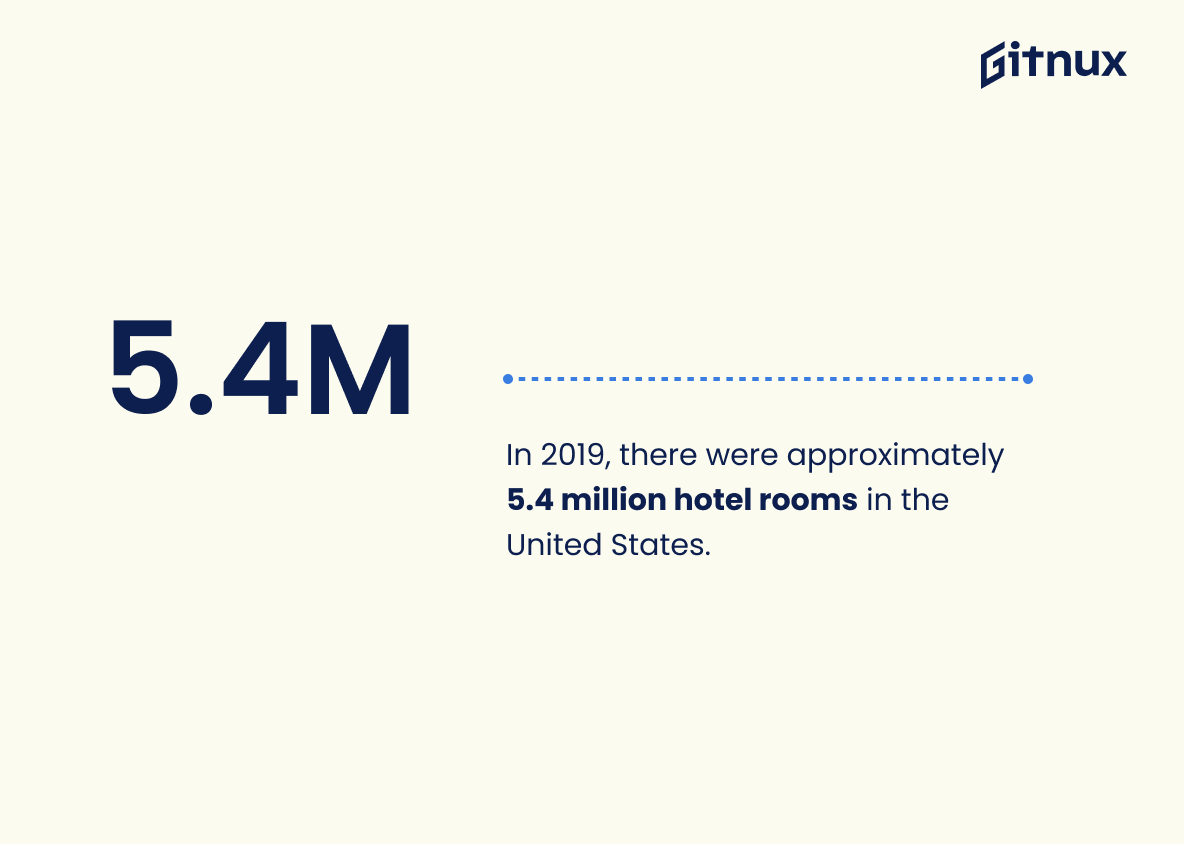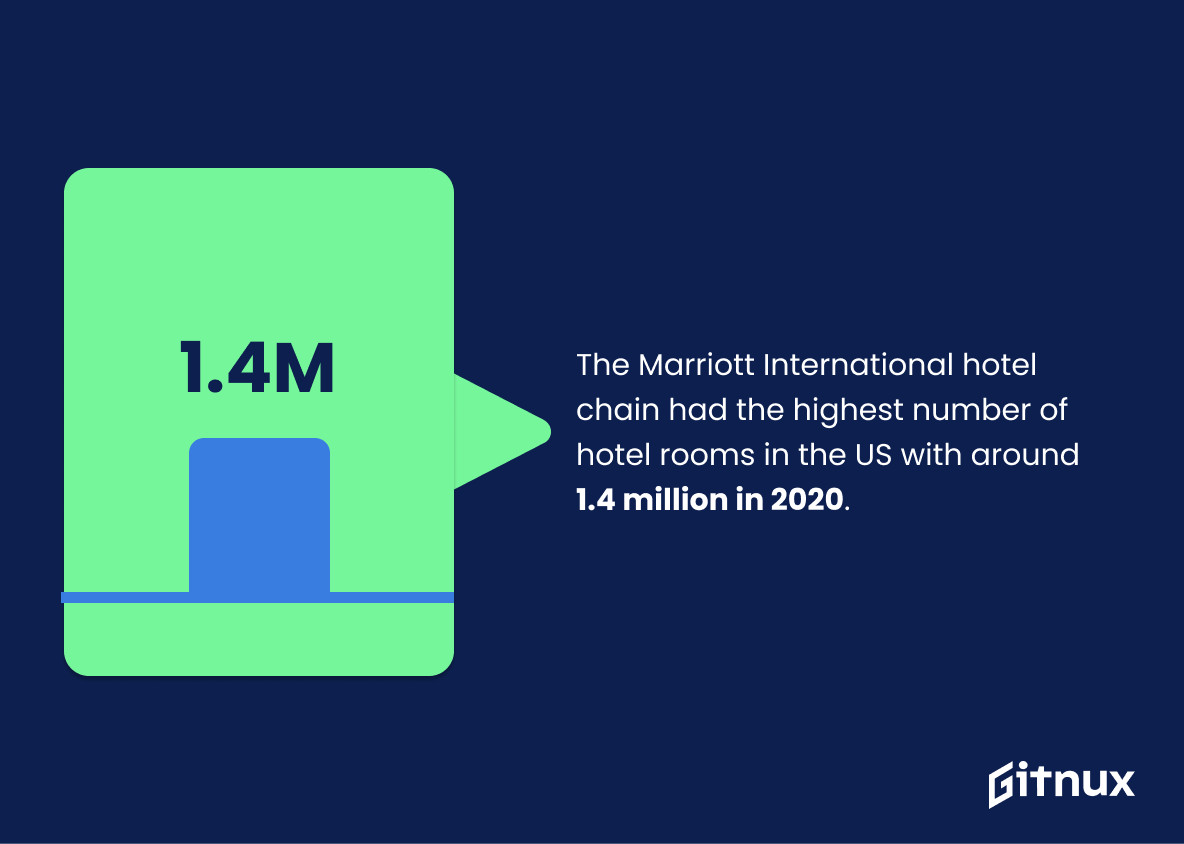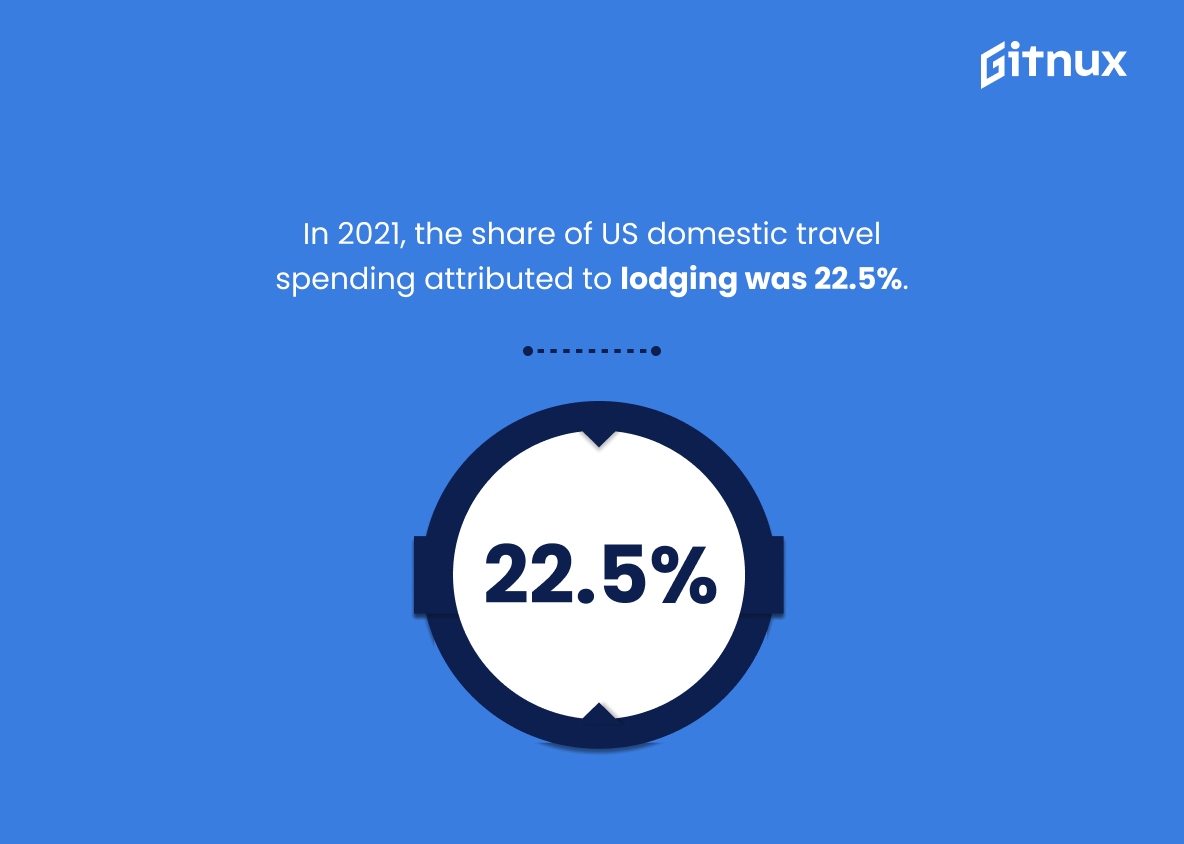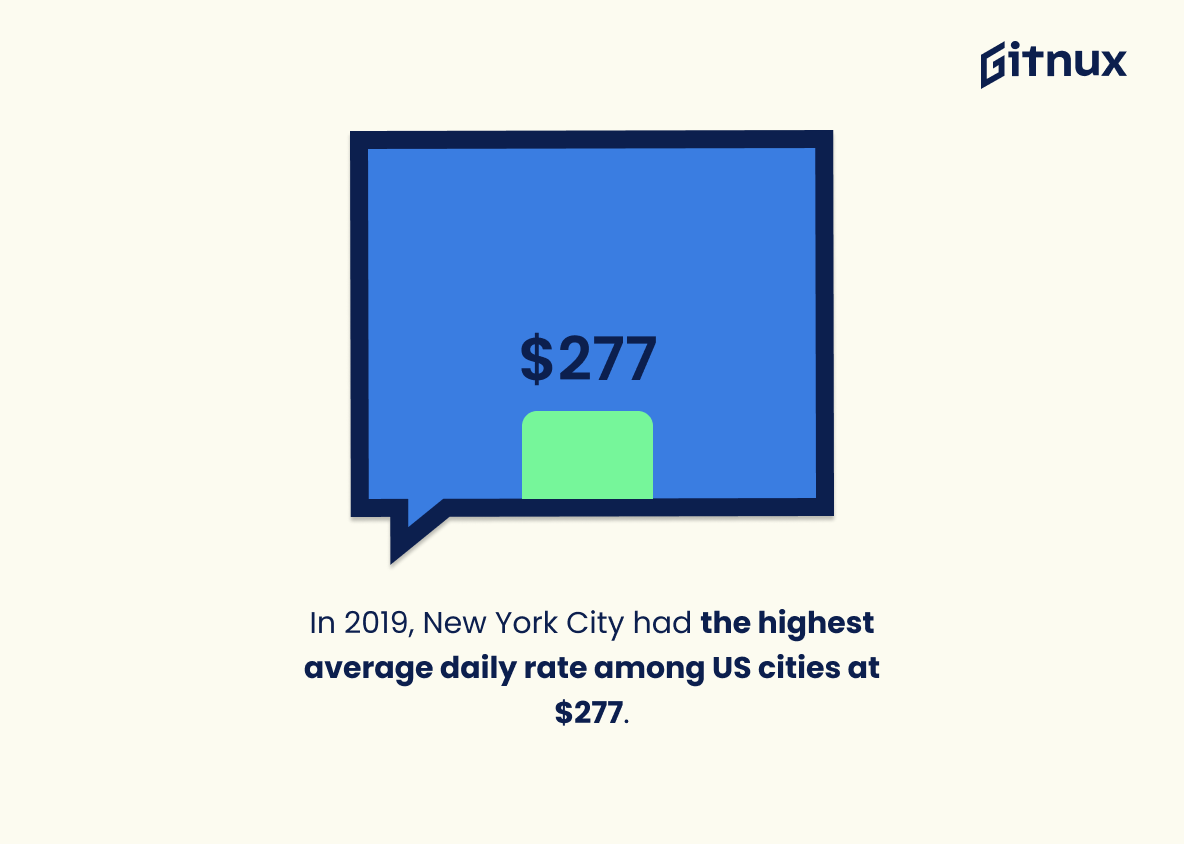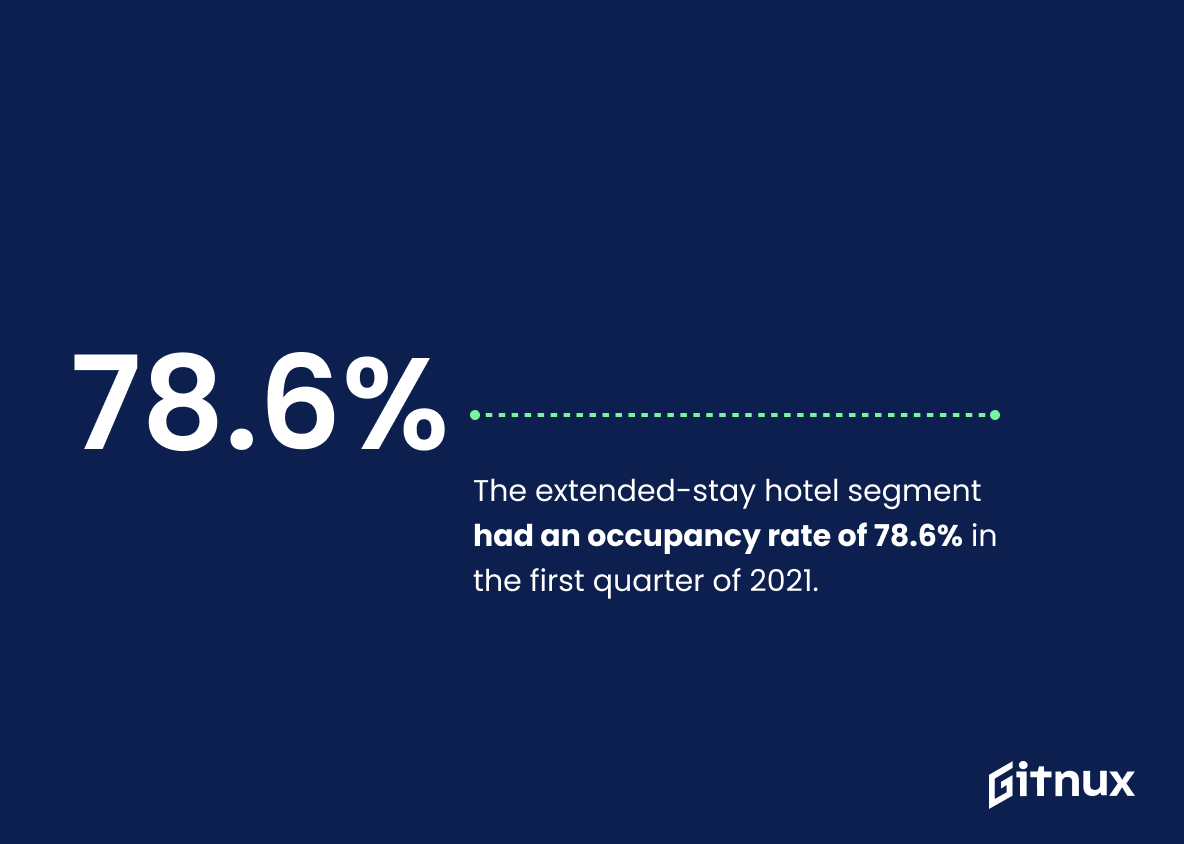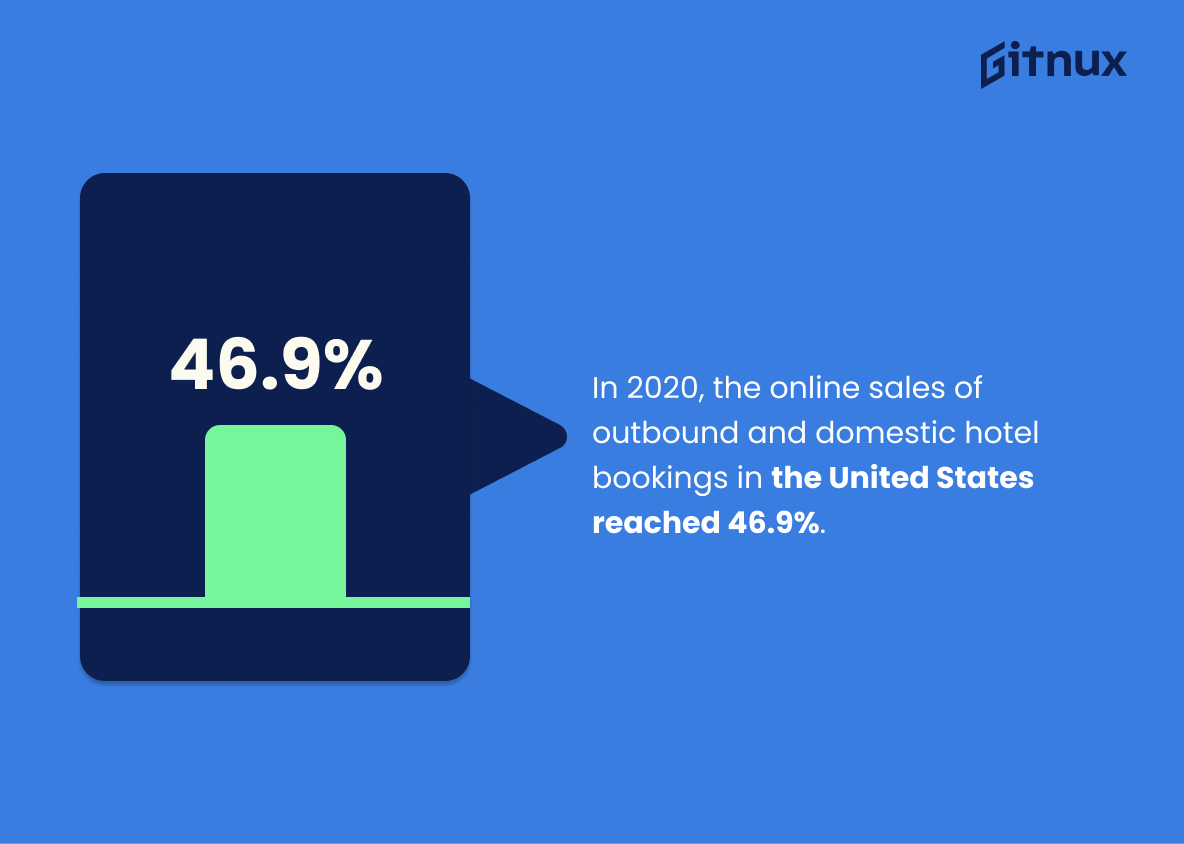The US hotel industry has seen a significant impact from the COVID-19 pandemic, with total revenues dropping by 47.5% in 2021 and occupancy rates declining to 44.4%. Despite this, there are still 54,200 hotel properties across the United States as of June 2020 and 82 million room-nights were sold in September 2021. In 2019 alone, the US hotel industry generated 208 billion U.S dollars in revenue and had an average daily rate (ADR) of 130.50 U.S dollars per night while employing 1.92 million people that year too – all impressive figures.
This blog post will explore some key statistics about the US Hotel Industry including market size for different segments such as budget hotels or luxury hotels; number of rooms available; construction costs per room; average daily rate among cities like New York City; occupancy rates for extended stay hotels on weekends or overall during Covid-19 times; online sales share for outbound/domestic bookings plus direct spending on lodging by domestic/international visitors etc., so let’s dive right into it.
Us Hotel Industry Statistics Overview
There were around 54,200 hotel properties in the United States as of June 2020.
This statistic is a powerful indicator of the strength of the US hotel industry. It shows that despite the economic downturn caused by the pandemic, the industry is still thriving with a large number of properties. This statistic is a testament to the resilience of the US hotel industry and provides a valuable insight into the current state of the industry.
As of September 2021, the U.S. hotel industry sold approximately 82 million room-nights.
This statistic is a testament to the strength of the U.S. hotel industry, showing that despite the pandemic, it has been able to remain resilient and continue to provide services to millions of customers. It is a clear indication that the industry is still a major player in the hospitality sector and is likely to remain so in the future. This statistic is an important piece of information for anyone looking to gain insight into the current state of the U.S. hotel industry.
In 2019, the average daily rate (ADR) for US hotels was 130.50 U.S. dollars.
The average daily rate (ADR) for US hotels in 2019 provides a valuable insight into the US hotel industry. It gives us an indication of the average cost of a hotel room in the US, which can be used to compare the prices of different hotels and regions. This statistic can also be used to measure the overall performance of the US hotel industry, as it provides an indication of the demand for hotel rooms and the pricing strategies of hotels. Furthermore, this statistic can be used to compare the performance of the US hotel industry to other countries and regions.
In 2020, the occupancy rate for US hotels was 44.4% due to the Covid-19 pandemic.
This statistic is a stark reminder of the devastating impact the Covid-19 pandemic has had on the US hotel industry. It highlights the drastic decline in occupancy rates, which has had a significant financial impact on the industry. This statistic is an important indicator of the current state of the US hotel industry and provides valuable insight into the challenges it is facing.
The budget hotel segment had a market size of 20.17 billion U.S. dollars in 2019.
This statistic is a powerful indicator of the immense potential of the budget hotel segment in the US hotel industry. It shows that the budget hotel segment is a lucrative market, with a market size of 20.17 billion U.S. dollars in 2019. This statistic is a valuable insight for anyone looking to invest in the US hotel industry, as it demonstrates the potential for growth and profitability in the budget hotel segment.
In 2020, the US luxury hotels segment had a market share of 10.3%.
This statistic is a telling indication of the US luxury hotels segment’s performance in 2020. It provides insight into the size of the market and the level of competition within it. It also gives an indication of the potential for growth in the sector, as well as the potential for new entrants to the market. As such, this statistic is an important piece of information for anyone looking to gain a better understanding of the US hotel industry.
The hotel industry employment in the United States reached 1.92 million in 2019.
This statistic is a testament to the strength of the US hotel industry, showing that it is a major employer in the country. It is a key indicator of the industry’s success and provides a valuable insight into the current state of the industry. This statistic is an important piece of information for anyone looking to gain a better understanding of the US hotel industry and its impact on the economy.
In 2019, there were approximately 5.4 million hotel rooms in the United States.
This statistic is a key indicator of the size and scope of the US hotel industry. It provides a snapshot of the number of hotel rooms available to travelers, giving an indication of the industry’s capacity to accommodate guests. Additionally, it can be used to compare the US hotel industry to other countries, providing insight into the relative size of the industry.
The Marriott International hotel chain had the highest number of hotel rooms in the US with around 1.4 million in 2020.
This statistic is a testament to the success of Marriott International in the US hotel industry. It highlights the company’s dominance in the market, with its 1.4 million hotel rooms accounting for a significant portion of the total number of hotel rooms in the US. This statistic is a clear indication of the company’s success and its ability to remain competitive in the US hotel industry.
In 2021, the share of US domestic travel spending attributed to lodging was 22.5%.
This statistic is a telling indication of the importance of the lodging industry in the US domestic travel market. It highlights the fact that lodging is a major contributor to the overall spending on domestic travel, and thus, is a key factor in the success of the US hotel industry.
In 2010-2020, the average construction cost per room of US hotel projects was $135,000.
This statistic is a telling indicator of the US hotel industry’s financial health. It reveals that, on average, the cost of constructing a single room in a US hotel project has been $135,000 over the past decade. This figure provides insight into the industry’s ability to finance projects and the overall cost of doing business. It also serves as a benchmark for potential investors to gauge the potential profitability of hotel projects.
In 2019, New York City had the highest average daily rate among US cities at $277.
This statistic is a testament to the booming hotel industry in New York City. It speaks to the city’s popularity as a tourist destination, as well as its ability to attract business travelers and other visitors. This high average daily rate is indicative of the city’s strong demand for hotel rooms, and it serves as a benchmark for other cities in the US hotel industry.
The extended-stay hotel segment had an occupancy rate of 78.6% in the first quarter of 2021.
This statistic is a telling indication of the strength of the extended-stay hotel segment in the US hotel industry. It shows that despite the challenges posed by the pandemic, the extended-stay hotel segment has been able to maintain a healthy occupancy rate, indicating that it is still a viable option for travelers.
In 2020, the online sales of outbound and domestic hotel bookings in the United States reached 46.9%.
This statistic is a powerful indicator of the success of the US hotel industry in 2020, despite the challenges posed by the pandemic. It shows that the industry was able to adapt to the changing landscape and capitalize on the growth of online sales. This statistic is a testament to the resilience of the US hotel industry and provides valuable insight into the current state of the industry.
The hotel industry’s contribution to the United States’ GDP was 102.22 billion U.S. dollars in 2020.
This statistic is a powerful indicator of the immense economic impact the hotel industry has on the United States. It demonstrates the sheer size and scope of the industry, and its importance to the US economy. It also serves as a reminder of the importance of the hotel industry to the US economy, and the need to ensure its continued success.
In 2020, 52% of American travelers preferred chain hotels when staying away from home.
This statistic is a telling indication of the current state of the US hotel industry. It shows that a majority of American travelers are opting for chain hotels when they are away from home, suggesting that these establishments are providing a reliable and satisfactory experience. This statistic is important for anyone looking to gain insight into the US hotel industry, as it provides a valuable insight into the preferences of American travelers.
Between January and May 2021, US hotel occupancy reached 66.7% on weekends.
This statistic is a telling indication of the US hotel industry’s recovery from the pandemic. It shows that despite the economic downturn, the industry is still able to attract customers and maintain a healthy occupancy rate on weekends. This is a positive sign for the industry and provides hope that it will continue to rebound in the coming months.
In 2020, the direct spending on U.S. hotel lodging by domestic and international visitors was estimated at 95.5 billion U.S. dollars.
This statistic is a powerful indicator of the strength of the U.S. hotel industry. It shows that despite the economic downturn caused by the COVID-19 pandemic, domestic and international visitors still spent a significant amount of money on hotel lodging in 2020. This statistic is a testament to the resilience of the U.S. hotel industry and provides valuable insight into the current state of the industry.
Conclusion
The US hotel industry has experienced a tumultuous year due to the COVID-19 pandemic. In 2019, the total revenue of the US hotel industry was 208 billion U.S. dollars and there were around 54,200 properties in operation at that time. However, by 2021 RevPAR had declined by 47.5% as occupancy rates dropped to 44%. Despite this decline in performance, 82 million room-nights were sold throughout 2020 and direct spending on lodging reached 95.5 billion U.S dollars from domestic and international visitors alike during that same period of time – indicating an overall resilience within the sector despite challenging circumstances caused by Covid-19 restrictions worldwide . The budget segment held 20 percent market share while luxury hotels accounted for 10 percent; both segments saw declines in their respective occupancies over 2020 but have since seen some recovery into 2021 with extended stay hotels reaching 78% occupancy rate between January and May 2021 alone . With 1.92 million employed across all levels of hospitality services , it is clear that even though much progress still needs to be made before pre-pandemic numbers are achieved again ,the future looks bright for America’s hotel industry going forward .
References
0. – https://www.statista.com
